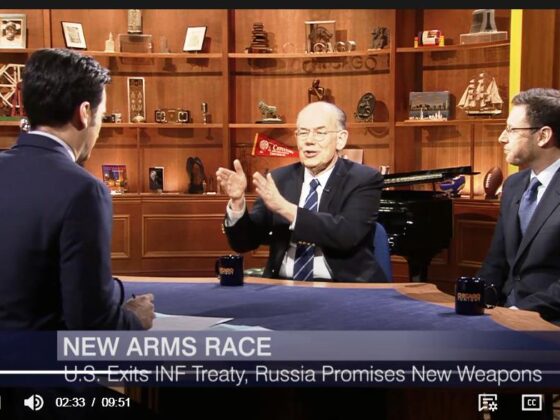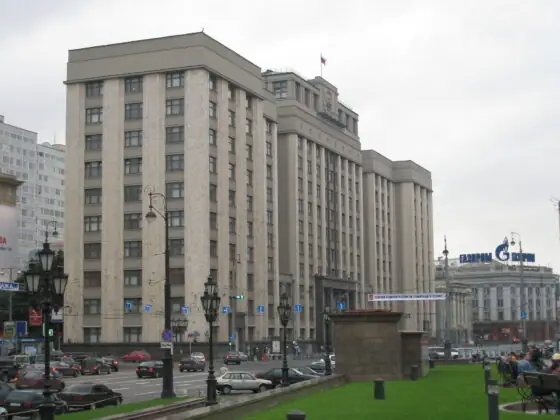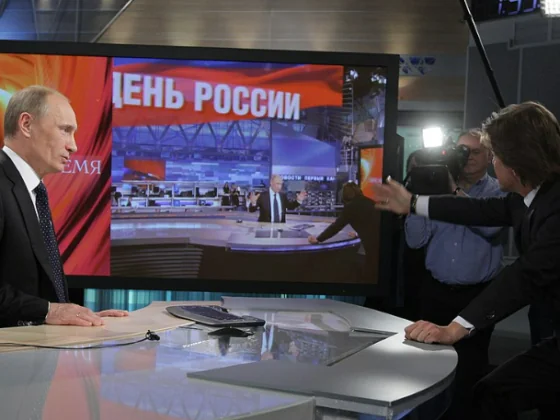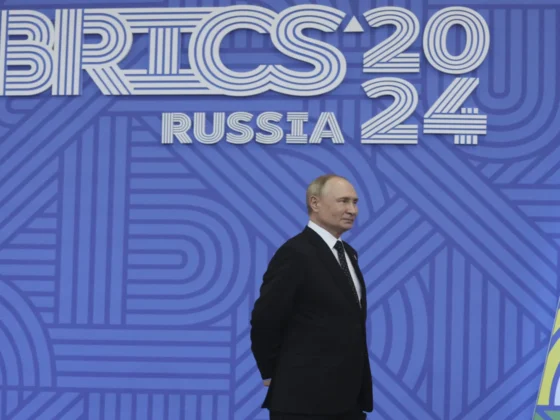Since Ukraine is the site of both an invasion (Crimea) and a civil war (in the Donbas), there is no academic consensus on what to call the crisis in Ukraine. Russians usually call it a civil war. Representatives of the U.S. government emphasize the invasion.
Invasion and civil war are not mutually exclusive terms in academic parlance. Iraq and Afghanistan are recent examples of cases that are well-understood to exemplify both. I propose in this memo that eschewing the term civil war forecloses promising diplomatic avenues for settlement. If the convention of calling Ukraine a civil war was adopted, an “elections first, military drawdown later” sequencing of the Minsk Accords could emerge as a pragmatic resolution path even if Crimea’s final status remains disputed. Several present-day underlying factors—the conventional nature of warfighting, common understandings of harms associated with a permanently frozen conflict in Eastern Europe, and (thankfully) the persistent absence of anti-civilian atrocities by either side—bolster the theory that permanent resolution is not yet out of reach.
A Civil War? Yes
The language of civil war meets the face validity standard for academics, as evidenced by the fact that the Peace Research Institute of Oslo (PRIO) codes the Ukraine conflict as a civil war. If we could put loaded geopolitical implications aside and simply describe conflict processes analytically, the events of 2014 in Ukraine would look familiar to contemporary students of civil war. Consider these facts of the case:
► In the early spring of 2014, the Ukrainian state was incapacitated in the aftermath of anti-regime street protests in the capital. These protests culminated in an irregular regime change that most Ukrainians today refer to as “The Revolution of Dignity.” (The Russian government still calls the Euromaidan events a coup.)
► In the spring of 2014, after the ruling Party of Regions collapsed and the head of state fled, there was a period during which the state security forces could not function according to predictable routines.
► The seizure of Crimea by Russian special forces sent a signal that interstate borders were no longer sacrosanct.
► During the chaotic period that followed, newly-formed pro- and anti-regime militias acted on their own accord (at a minimum, it is clear that not all were taking orders from Moscow or Kyiv). Throughout 2014, the militias fought each other. Throughout most of the country, none of the anti-regime militias had any success seizing state institutions. In the eastern Donbas region of Ukraine, things were different. In this former Party of Regions stronghold, indigenous insurgents captured the regional apparatus of the state in two regions (oblasts) during a window of temporary state incapacitation. Militias clashed, then consolidated, and eventually formed stable coalitions, now referred to as “the Ukrainian army” and “the secessionist rebels” in shorthand.
► Zones of fighting calcified into stable frontlines in the winter of 2015 after Russia sent regular troops to tip the scales at two critical junctures: the battles of Ilovaisk and Debaltseve. Territory has not changed hands significantly since those battles. There is no question that the conflict’s dynamics were—and remain—influenced by outside parties. All of these foreign interveners reliably claim that their motives are humanitarian and defensive while asserting the others’ interventions are nefarious.
► There have been about 10,000 deaths (approximately 6,000 military deaths and 4,000 civilian deaths) resulting from the conflict. The warfighting is conventional. Heavy weaponry deployed against symmetrically armed formations.
► Virtually none of the stakeholders—Russia, Ukraine, the EU, or the United States—have advocated re-drawing the borders of the Ukrainian state in order to disassociate the Donbas territories from Ukraine proper. Moscow has rebuffed numerous secessionist proposals for incorporation of the Donbas into Russia, refusing to replicate the Crimea model.
Why Change Our Language?
It is important to change our language to embrace the conflict as a civil war in recognition of the fact that negotiations often break down because of a common and well-analyzed commitment problem, analyzed most famously and piercingly by American political scientist Barbara Walter. To the extent that this war is imagined essentially as an interstate conflict or an invasion (or an occupation), the implied claim is that if the conflict were to end on Ukrainian terms, and all of the Russian soldiers went home, normal political life would resume with armies securely on either side of the interstate border. When the same conflict is framed as a civil war, however, it invites us to include the point of view of the sizeable proportion of the multi-million Russian-speaking population who see themselves as Russians, and who carry the personal scars of this war, and who are already home and are going to reside in territorial Ukraine after the guns go quiet. They will live in fear of vengeance and retaliations (legal and perhaps extra-judicial) if the territory is brought back into Ukraine.
By insisting upon post-disarmament security guarantees for Russians who will continue living in Ukraine after the conflict is resolved, the Russian government is articulating a set of valid concerns that will have to be addressed in a final settlement. Russian-speakers living in the Donetsk People’s Republic (DNR) and Luhansk People’s Republic (LNR) are more likely to be convinced to lay down their weapons with third-party security guarantees (which will be revisited in detail below).
The civil war literature also provides some reasons for optimism. The war being fought in Ukraine’s east may be a mutually hurting stalemate, ripe for resolution. Additionally, consider the fact that all of the great powers understand, or can be made to understand, the following points in the same way:
► The absence of large-scale civilian atrocities thus far suggests that neither side has an interest in hardening the ethnic divisions of the conflict for strategic gain. Thanks to the proliferation of camera phones and social media accounts, we would know if there had been mutilations, mass rape, or other violence against civilians. These tactics have not been employed. This is cause for hope.
► The harms associated with leaving Eurasian civil wars unsettled are on display in Nagorno-Karabakh, Abkhazia, South Ossetia, and Transnistria. Separate zones of control with no formal settlement can calcify into disputed borders and corrupt smuggling economies. In the worst cases, semi-permanent refugee populations give rise to memory wars and interminable cycles of conflict reoccurrence.
► The fortunes of war have de facto divided the Donbas. It has been empirically established that the territory itself is defensible. Displaced populations have had ample time to vote with their feet. Many stayed.
► The material balance of forces has been clear for years. If Russia were to close its border and withdraw support for its proxies, it is doubtful that those forces could survive autonomously against the Ukrainian army. This offers a mixed bag. On the one hand, this is consistent with Kremlin propaganda. It highlights the vulnerability of Russian-speaking civilians to vengeful Ukrainians if Russia were to disengage itself completely. On the other hand, the Kremlin has direct and indirect leverage (as evidenced by the recent assassination of Aleksandr Zakharchenko, gas and financial subsidies, rebel anti-air weaponry, and more). Russia’s organizing presence in the conflict zone has effectively prevented the fragmentation of the anti-Kyiv opposition into multiple rebel constituencies, eliminating the complexities involved in coordinating a negotiated settlement across many different rebel groups.
Internationalizing Conflict Resolution: the Critical Role of the OSCE
What remains is to trade bullets for ballots, to borrow Berkeley professor Aila Matanock’s alliteration. When Russian diplomats argue that the government of Ukraine is demonstrably uninterested in solving the crisis of representation in Ukraine’s East that began with the implosion of the Party of Regions, and Western governments are abetting their largesse, their criticism is not without merit. The 2019 elections provide an ideal opportunity to meet this criticism head-on.
Subnational electoral divisions should be permitted to reflect new battlefield divisions. A signed agreement along these lines is already in place—the Minsk Accords. They have not been implemented to anyone’s satisfaction, and both Kyiv and Moscow blame the other for systematic failures of compliance. Importantly, however, it is the sequencing of steps that is contested, not the content of the agreement itself. The Minsk Accords are a focal point for coordination on a mutually acceptable final settlement. If the provisions of the Minsk Accords were implemented to the letter, some in Kyiv fear that they would lock in the artificially-created cleavages and power structures of the conflict. Some Donbas precincts have not had a competitive election since independence from the Soviet Union. The presence of the war and the dominance of Russian media is sure to tilt the field in favor of Moscow.
Figure 1. Single Member District Voter Turnout in the 2014 Parliamentary Elections

Source: Figure by the author from voter turnout data from the Ukrainian Electoral Commission. Squares represent urban population centers with more than one single-member district. The star represents Kyiv. No votes counted in Crimea or DNR/LNR Donbas.
Many people did not bother showing up to vote in the parliamentary elections of 2014 (see Figure 1), suggesting that many Russian-speakers in the east did not feel well-served by any of electoral alternatives in Ukraine at the time. But in 2019, as new elections loom, fresh opportunities will present themselves. This scheduled election, which will include campaigns and media coverage in the Russian language, should be treated as an opportunity for Donbas residents to have their voices heard in the Parliament in Kyiv. At the time of this writing, there are a plethora of pro-NATO anti-Minsk parties represented in the Rada that have bet their political futures on indefinite frozen conflict and a permanent war-footing against Russia. The status quo policy of delaying elections is a response to the demands of this constituency; they will continue to oppose bringing more pro-Russia (or even pro-Minsk) votes into the Parliament. This is a barrier to conflict resolution.
In the short term, only free and fair elections can answer the empirical question of how much support there actually is for a pro-Kremlin party among Russian-speaking Ukrainians—who used to cast their votes predictably for an entity that no longer exists (The Party of Regions). Restoring expectations of regular elections in Ukraine’s eastern oblasts is the first of many steps that will have to be taken to keep this conflict contained.
Since the government of Ukraine lacks the capacity to oversee an election, the OSCE should take responsibility for implementing and certifying the election. Although the results of a recent self-organized election in the separatist Donbas regions were not recognized by anyone, the high reported turnout and very strong showing for anti-Western platforms suggests that may fall on the OSCE to validate a non-competitive election in the East. Accusations that what has occurred is tacit electoral engineering, in a body where Russia holds a veto, because of a mandate prioritizing civil war settlement over “real democracy.” Here the West must hold firm. Compromises in places like Bosnia have included explicit ethnic quotas, ethnicized power sharing, or federalism to keep interstate borders intact and make promises of minority protection credible. This model could be exported to Ukraine. Western capitals have leverage—IMF and EU donor charity pays the salaries of millions of Ukrainian civil servants after all. How to make future conditional elections engineered to give Russian-speaking Ukrainians in the East a stronger voice in government will be tricky.
The concern by historically-literate Ukrainians that Russia will never withdraw its troops from the Donbas, even subsequent to elections, must be somehow addressed. Creativity is needed. A potential compromise solution would be for Russia and France to both be designated as lead states overseeing the implementation of disarmament in the Donbas region, formally (in a United Nations Security Council Resolution) or informally (by convention within the OSCE). This could allow Western European NATO members to have skin in the game while avoiding the nightmare of Russian and American special forces brushing up against each other (if NATO were to take the lead). France is a traditional American ally, but one with a history of standing up to the United States (such as in Iraq 2003), which makes it well-situated for this role. In caricature, Russia watches Ukraine while France (along with the rest of the OSCE) watches Russia watching Ukraine.
Some conflict resolution processes depend critically on the assumption of a politically neutral third-party military presence that Russia cannot possibly supply. Russia is already partisan to Ukraine’s civil war. Instead, OSCE-monitored free and fair elections could be invoked as part of a cold-blooded diplomatic strategy to force accountability on Russia and internationalize the conflict. Pre-positioning Western European observers from every EU member state in the Donbas to reify the voting exercise would make these election officials hostages if any party were to re-start the conflict. They would also raise the costs of clandestine meddling by any foreign powers by raising the probability of detection. The OSCE could then remain in Ukraine to help implement and observe reconstruction. Peacekeepers can contribute to building a lasting peace.
In the long term, without Crimea, a pro-Russia ruling party is probably a demographic impossibility. (As Michael McFaul prophesied after Crimea: “A pawn for a queen.”) This prediction should be tested at the ballot box, however. Foreign governments are going to be accused of meddling—sometimes with cause. There is no alternative but to allow new parties to form, and then re-form, again and again. That is how democracy is supposed to work. Let the information and misinformation comingle in ugly campaigns. Then count the votes as fairly as possible and let the chips fall. We may observe, over time, that disaffected anti-Western voices can coordinate to re-capture a parliamentary majority. If the people will it, let it be. We may instead observe, over time, that disaffected anti-Russia voices can coordinate to re-capture seats in the East. If the people will it…
Conclusion
The language of civil war is seen as a capitulation to Russia by many people. Because the term emphasizes internal Ukrainian politics, it can be confused with blaming the victim or whitewashing Russia’s role in fomenting the conflict. That is not my advocacy. The taboo of employing the phrase civil war when describing the conflict, however, may be a barrier to conflict resolution of the crisis. If both Western academics and policymakers adopted the convention of calling Ukraine a civil war, we would be better positioned to read the letter of the Minsk Accords as a pragmatic script for resolving the conflict cooperatively. We may be better equipped to recognize the valid concerns of the Russian-speaking Ukrainian population and identify specific issues that require resolution or should be prioritized in rebuilding. A peaceful settlement to the conflict is best pursued by supporting free and fair elections in the Donbas regions alongside the regular elections scheduled for the coming calendar year.
Jesse Driscoll is Associate Professor of Political Science at the University of California San Diego.
[PDF]











